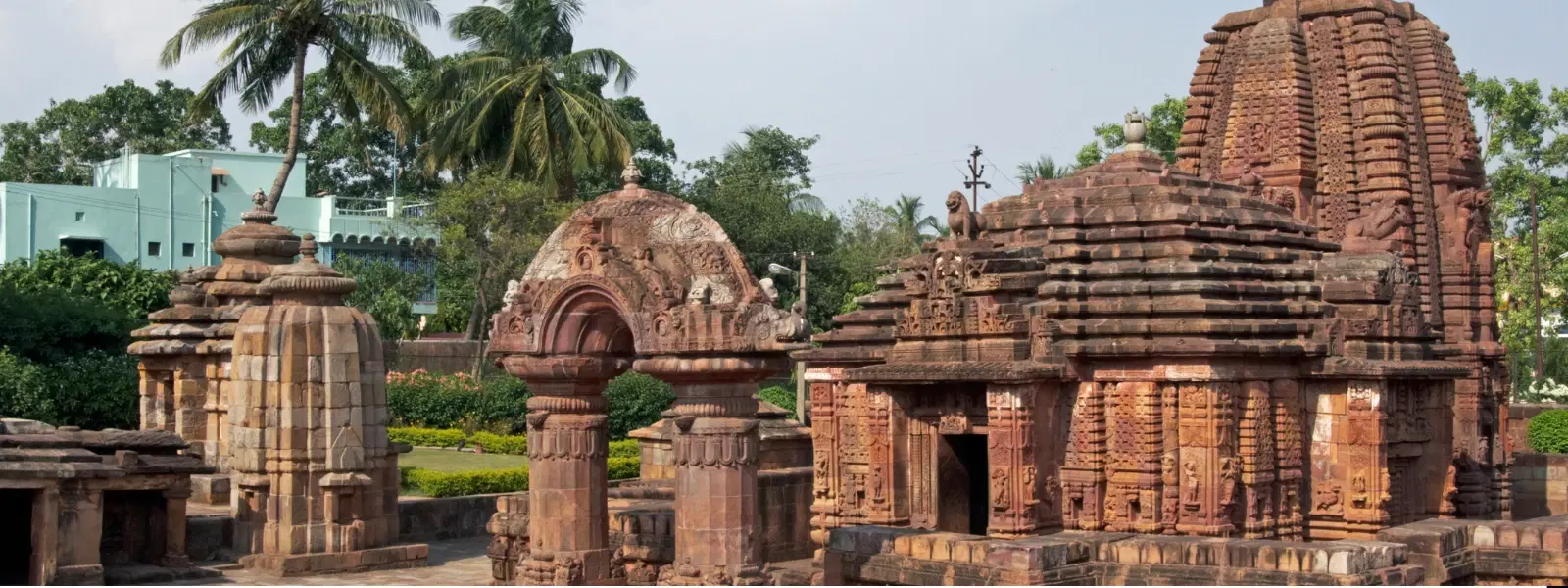
Hotels
•04 min read

The Mukteswara Temple stands as a breathtaking marvel of history and artistry in Bhubaneswar, a masterpiece of Orissan architecture that captivates every visitor with its mesmerizing beauty and rich past. This ancient Indian temple not only serves as a spiritual haven but also as a living gallery of Kalinga style artistry. In this blog post, we will answer frequently asked questions about the Mukteswara Temple, delve into its storied past, examine its stunning architecture, and explore its enduring cultural significance in Odisha.
Constructed during the reign of the Somavamshi dynasty in the 10th century, the Mukteswara Temple embodies an era of spiritual enlightenment and architectural innovation. Its creation marked a turning point in Hindu temple architecture in Odisha, and its legacy continues to inspire both scholars and travelers. As one of the ancient Indian temples, it has served not only as a place of worship but also as a repository of centuries-old traditions and artistic expressions.
The temple is a vivid storyteller of Odisha's rich heritage, reflecting the evolution of Hindu temple architecture over the ages. It stands as a testament to the region's spiritual and cultural dynamism and remains intricately connected to the broader tapestry of Odisha heritage sites. The fusion of artistic expression and religious fervor is evident in every carving and structure, making Mukteswara an unmissable cultural landmark in Bhubaneswar.
Mukteswara Temple is lovingly referred to as the "gem of Orissan architecture" for its stunningly intricate details and graceful design. Its compact yet sophisticated design, along with refined sculptural elements, highlight a mastery in architectural style that continues to influence temple designs in the region. This unique blend of art and architecture makes the temple a true jewel in the crown of Odisha’s historical treasures.
The architectural genius behind Mukteswara Temple lies in its adherence to the styles typical of Orissan temple architecture. Defining features such as the towering rekha deul and the inviting jagamohana porch not only enhance its aesthetic appeal but also serve important symbolic and functional roles in religious practices. This style is known for its graceful curves, intricate details, and harmonious proportions that evoke a sense of balance and spirituality.
Diving deeper, we uncover the rich nuances of Kalinga style architecture. This approach is renowned for its geometric perfection and the extensive use of elaborate sculptures and carvings. Each element is meticulously crafted to illustrate a blend of artistic finesse with spiritual symbolism. The temple’s facades display striking artwork, representing everything from divine figures to abstract motifs that serve as both decorative and didactic elements.

The detailed carvings at the Mukteswara Temple are perhaps its most alluring feature. These artistic depictions include representations of nagas, river goddesses like Ganga and Yamuna, and even celestial beings, all rendered with a delicate precision that tells stories of myth and mysticism.
Did You Know? The Mukteswara Temple is often called the 'miniature gem' because of its compact size and intricate detailing, which set a benchmark for later temples in Odisha.
An iconic element of the Mukteswara Temple is its beautifully crafted torana, or arched gateway. This structure is a rare aesthetic feature in Orissan temples and carries deep symbolic value, representing passage and transition from the worldly to the divine. Its elegant curves and detailed ornamentation invite devotees into a space where art meets devotion.
Inside the temple, visitors find a meticulously arranged layout featuring a spacious mandapa (pillared hall) and the sanctum sanctorum, where the deity resides. The mandapa offers a gathering place for community prayers and reflections, while the sanctum is the heart of the temple, exuding an aura of sacred serenity and mystique.
The temple’s carvings are more than mere decoration – they are narratives etched in stone. Each sculpture tells a tale, portraying episodes from mythology, incorporating hints of Tantric traditions, or even showcasing everyday life in ancient Odisha. This artful storytelling through stone not only educates but also enchants the onlooker.
Mukteswara Temple is an integral part of Odisha’s splendid mosaic of heritage sites. It stands alongside other great architectural wonders in Bhubaneswar, contributing to the city’s identity as the ‘City of Temples.’ This historic edifice continues to attract historians, art enthusiasts, and tourists alike, each drawn by its timeless charm and cultural depth.

The temple fulfills its spiritual significance by serving as a pilgrimage site for devotees from all over the region. Its serene ambiance and sacred energy resonate with those seeking inner peace and connection with the divine. The temple’s spiritual aura and historical legacy make it a powerful symbol of faith in Indian culture.
As a vibrant link to the past, preserving the Mukteswara Temple is of paramount importance. Efforts to maintain and restore this ancient masterpiece underscore the broader commitment to protecting India’s rich heritage. Preservation not only safeguards the temple's artistic and religious value but also serves as an educational tool for future generations.
The Mukteswara Temple is widely regarded as the gem of Orissan architecture due to its intricate carvings, unique arched gateway, and exemplary Kalinga style design.
The Brahmeswara Temple follows the Kalinga style of architecture, similar to the Mukteswara Temple, but with distinct features like its larger scale and additional sculptural elements.
Key components include the rekha deul, jagamohana, torana, and intricate carvings depicting mythological and daily life scenes.
The Mukteswara Temple was built by the Somavamshi dynasty during the 10th century.
The carvings are renowned for their intricate detailing, storytelling elements, and the rare inclusion of Tantric influences, which set the temple apart from others in Odisha.
The Mukteswara Temple is not only a jewel of Orissan temple architecture but also a living emblem of Odisha’s cultural and spiritual heritage. Through its history, stunning wooden sculptures, and intricate carvings, the temple tells a story of ancient artistry and persistent devotion. This exploration of its architectural features and historical significance provides insight into why it remains a must-visit destination for those passionate about history, art, and spirituality.